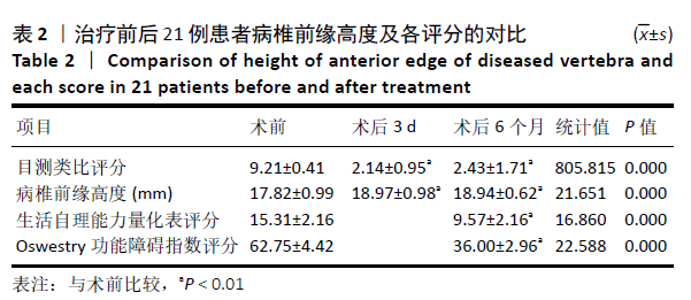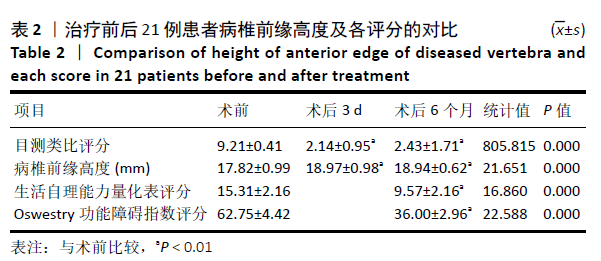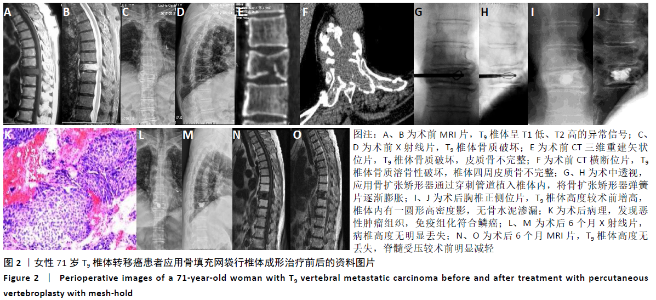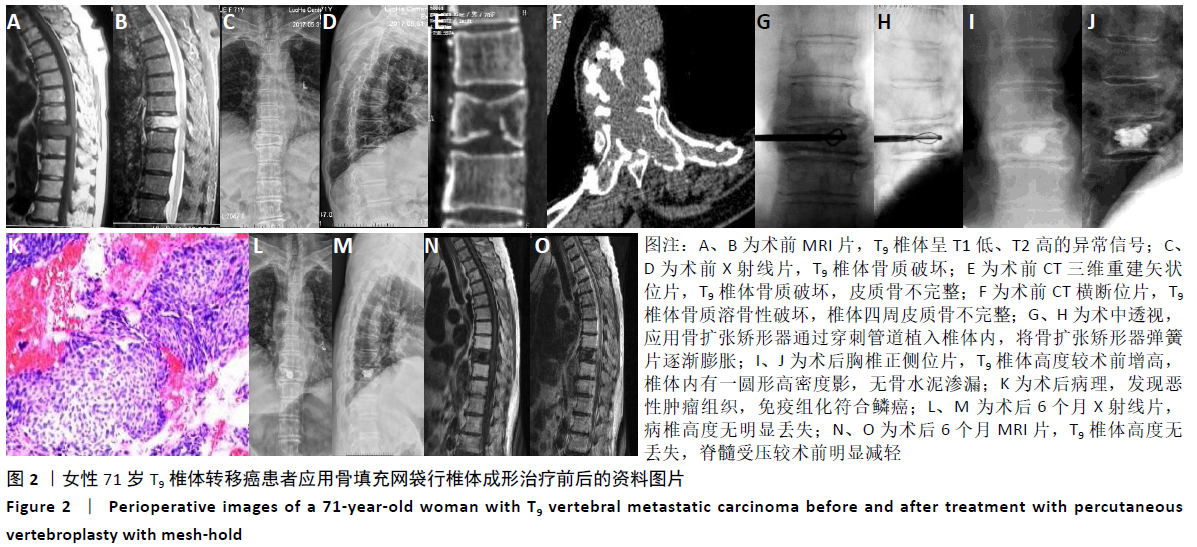[1] FEIZ-ERFAN I, RHINES LD, WEINBERG JS. The role of surgery in the management of metastatic spinal tumors. SeminOncol. 2008;35(2): 108-117.
[2] 林书,胡豇,万仑,等.骨科机器人辅助经皮椎体后凸成形治疗多节段脊柱转移瘤[J].中国组织工程研究,2020,24(33):5249-5254.
[3] 罗杰斯,吕跃斌,殷召雪,等.中国长寿地区65岁及以上老年人生物标志物与日常生活自理能力的关系[J].中华预防医学杂志, 2017,51(11):1012-1018.
[4] 李玉伟,王海蛟,王义生,等.PTED与TLIF治疗高位腰椎间盘突出症的效果比较[J].中华医学,2018,98(2):113-116.
[5] YANG PL, HE XJ, LI HP, et al. Image-guided minimally invasive percutaneous treatment of spinal metastasis. ExpTher Med. 2017; 13(2):705-709.
[6] 李明辉,刘洋,张觅,等.不同黏度骨水泥椎体成形治疗胸腰椎转移肿瘤[J].中国组织工程研究,2019,23(26):4129-4135.
[7] ZHANG JJ, ZHOU Y, HU HY, et al. Safety and efficacy of multilevel vertebroplasty for painful osteolytic spinal metastases: a single-centre experience. Eur Radiol. 2017;27(8):3436-3442.
[8] TIAN QH, SUN XQ, LU YY, et al. Percutaneous Vertebroplasty for Palliative Treatment of Painful Osteoblastic Spinal Metastases: A Single-Center Experience. VascInterv Radiol. 2016;27(9):1420-1424.
[9] 刘勇,夏波,李新福.椎体后凸成形骨水泥注入治疗脊柱转移瘤:脊柱稳定性与疼痛的变化[J].中国组织工程研究,2015,19(16): 2484-2488.
[10] WANG Y, LIU H, PI B, et al. Clinical evaluation of percutaneous kyphoplasty in the treatment of osteolytic and osteoblastic metastatic vertebral lesions. Int J Surg. 2016;30:161- 165.
[11] LIU X, YANG Z, XIE L, et al. Advances in the clinical research of the minimally invasive treatment for the posterior edge of vertebral-body defects by spinal metastases. Biomed Rep. 2015;3(5):621-625.
[12] 黄霖,陈铿,蔡兆鹏,等.微创穿刺Intrabeam(R)术中放疗联合椎体强化治疗脊柱转移瘤的近期疗效分析[J].中华骨科杂志,2016, 36(4):215-222.
[13] YUAN L, BAI J, GENG C, et al. Comparison of targeted percutaneous vertebroplasty and traditional percutaneous vertebroplasty for the treatment of osteoporotic vertebral compression fractures in the elderly. J Orthop Surg Res. 2020;15(1):359.
[14] 吴四军,刘正,姚洪春,等.应用高黏度骨水泥PVP治疗骨质疏松性椎体压缩骨折与传统PKP的临床疗效比较[J].中华骨科杂志, 2017,37(2):74-79.
[15] 潘元星,米川,施学东,等.聚甲基丙烯酸甲酯骨水泥对肺癌细胞毒性作用的体外实验[J].中国组织工程研究,2017,21(2):187-191.
[16] CORCOS G, DBJAY J, MASTIER C, et al. Cement leakage in percutaneous vertebroplasty for spinal metastases: a retrospective evaluation of incidence and risk factors. Spine. 2014;39(5):E332-338.
[17] LI Y, QING Y, ZHANG Z, et al. Clinical efficacy of percutaneous vertebroplasty combined with intensity-modulated radiotherapy forspinal metastases in patients with NSCLC. Onco Targets Ther. 2015; 19(8):2139-2145.
[18] 李玉伟,崔红领,王海蛟.应用可弯曲骨水泥注入器单侧穿刺行经皮椎体成形术的可行性及疗效[J].中华放射学杂志,2017,51(4): 293-298.
[19] 林端阳,王孝林,谭涛,等.网袋加压成形与后凸成形治疗后壁破损型骨质疏松性椎体压缩性骨折的近期疗效对比[J].中国微创外科杂志,2019,19(5):430-434. |



